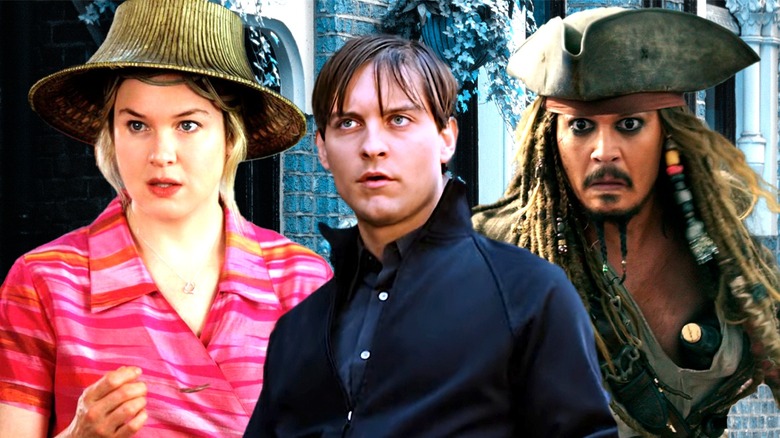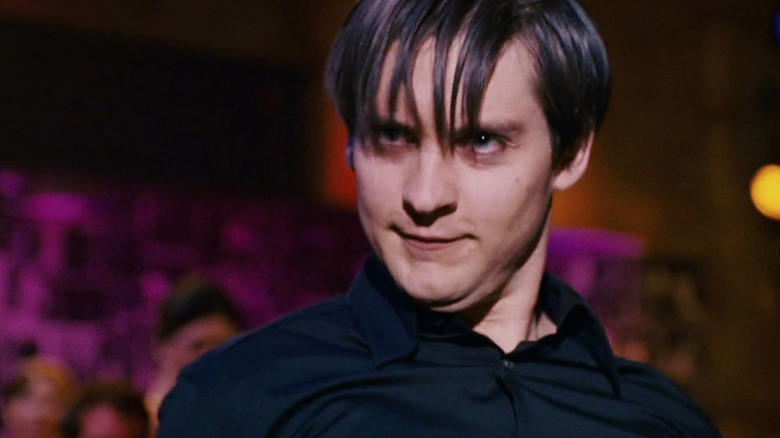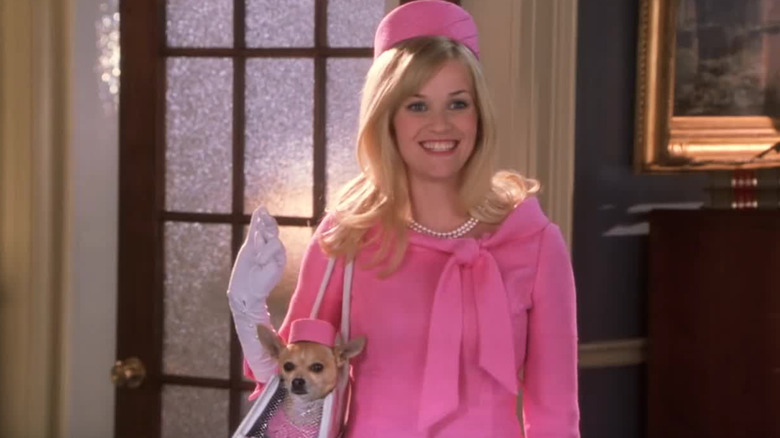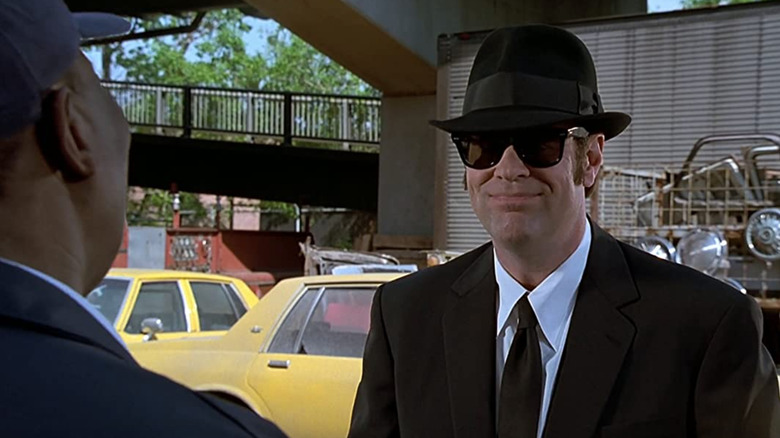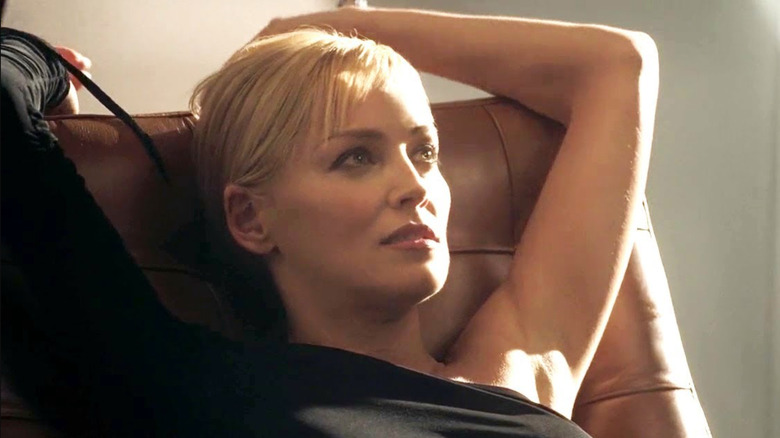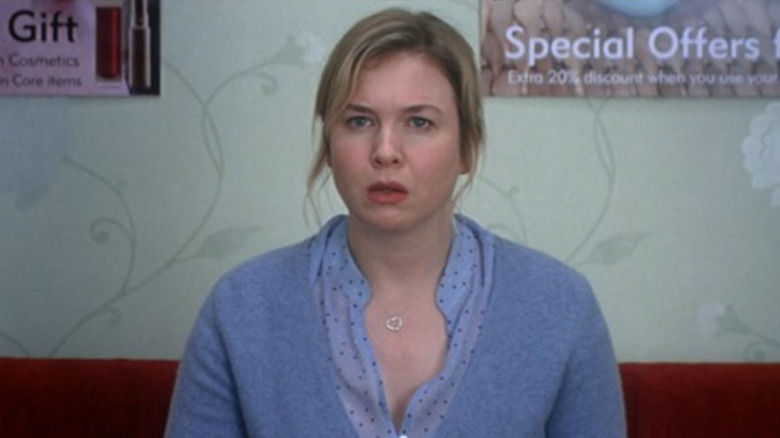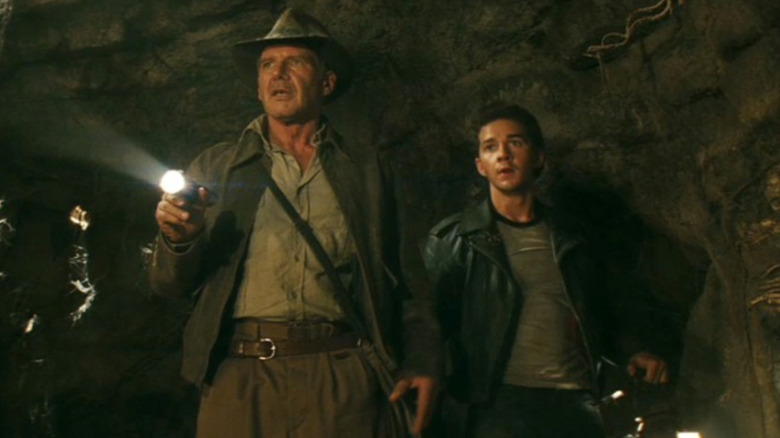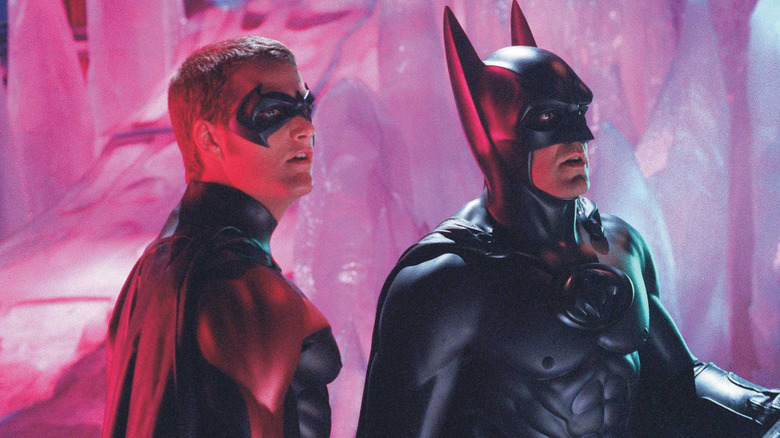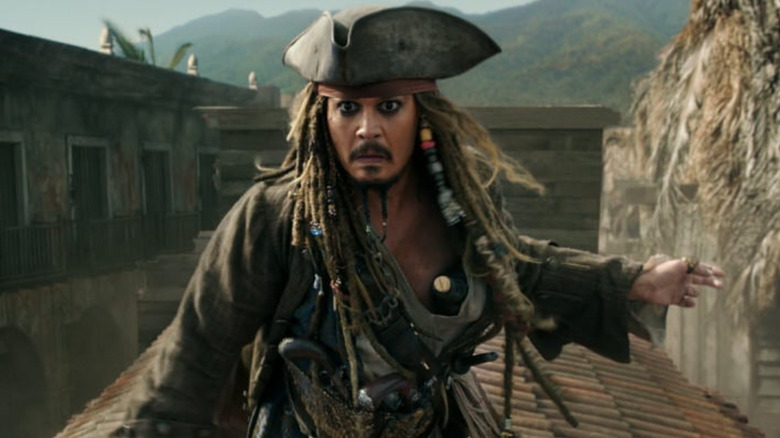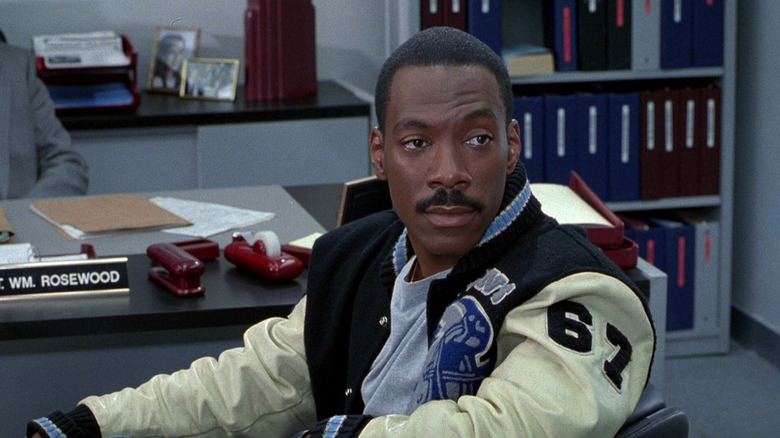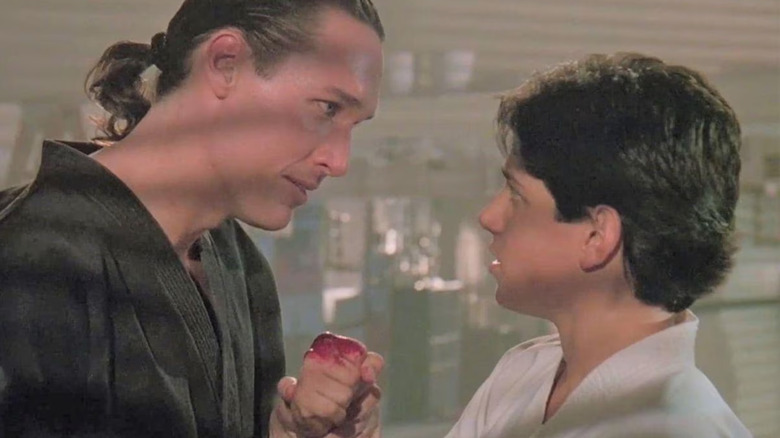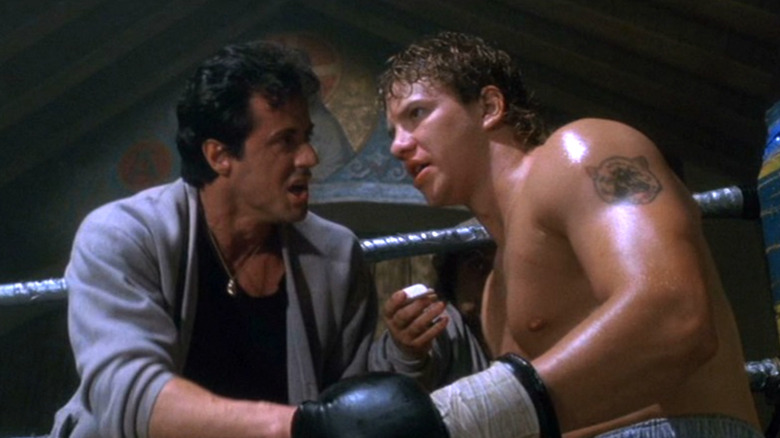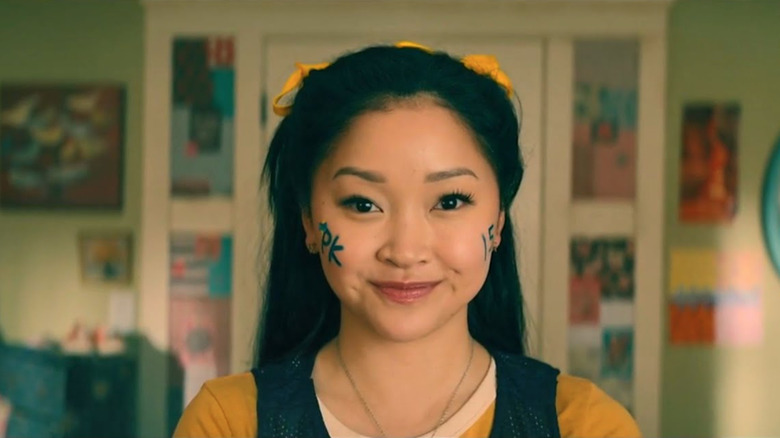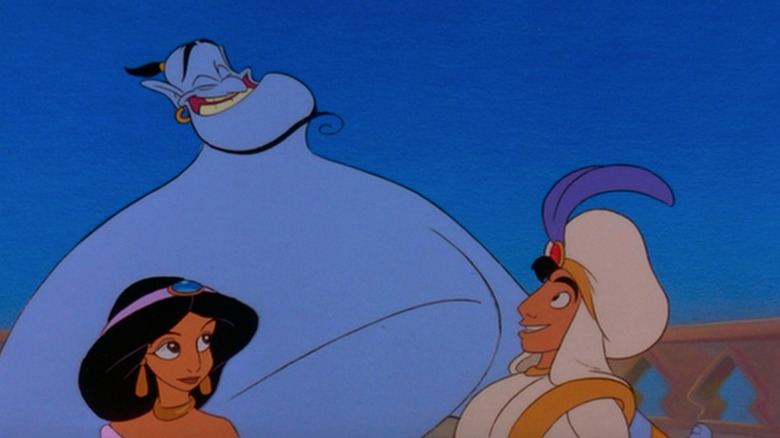Famous Characters Ruined By Awful Sequels
It's only natural to feel an attachment toward our favorite characters. You drop in on a character's life, and before you know it, you're joining them on their transformative hero's journey. Their distinct personality and traits pull you in from the moment you meet them. They stick with you long after the credits roll, and you realize two and a half hours wasn't enough. You need more time with this character. So when the sequel is announced, it's hard not to contain your excitement. You're there on opening night, popcorn in hand. What has this character been up to since you last saw them? What kind of adventures and trouble will they get into this time?
It doesn't take long for the disappointment to settle in. Not only does the sequel not live up to its predecessor, but it butchers the character you once knew and loved. It's obvious to everyone that the character would never act that way or make that decision. They've become a shell of who they used to be. Sadly, this happens all too often. To save you the heartbreak, look out for these famous characters ruined by awful sequels.
Peter Parker - Spider-Man 3
With great power comes great responsibility. Unfortunately, writer-director Sam Raimi couldn't live up to these words of wisdom when creating Peter Parker for "Spider-Man 3." The first two movies of the trilogy establish Peter Parker as a wimpy nerd who uses his newfound superhuman abilities to selflessly fight crime after carrying the burden of his Uncle Ben's preventable death. He's constantly battling the impossible balancing act of living a normal life and fulfilling his superhero duties.
In "Spider-Man 3," though, his down-to-earth likability is replaced with arrogance and selfishness, and that's before the symbiote gets ahold of him. The scene where Spider-Man kisses Gwen Stacey in front of his girlfriend, Mary Jane, at a festival celebrating the greatness of Spider-Man is an ample example of how far gone his character is — inflated ego and all. It's still hard to believe that it gets even worse when Peter fully embraces his symbiote alter ego. Peter strutting around town with his gelled emo-styled hair while shooting finger guns is enough to make anyone's skin crawl. Of course, when you consider the symbiote, this newfound confidence is purposefully meant to be a far cry from the Peter we've come to know. Still, this out-of-pocket characterization was traumatizing enough to turn people off from Tobey Maguire's Peter Parker for good. So much so that perhaps it became one of the reasons as to why a fourth installment was canceled in favor of an entire reboot. Good thing he saved some face with his clever cameo in "Spider-Man: No Way Home."
Elle Woods - Legally Blonde 2: Red, White & Blonde
The rom-com queen herself, Elle Woods from "Legally Blonde," takes the dumb blonde archetype and flips it on its head. She's an intelligent, capable, kind, well-rounded woman who excels at anything she puts her mind to, frequently overcoming damaging preconceived judgments based on her overly-feminine appearance and attitude. For many, she's an inspiring representation of women in the workplace. Her story begins when she becomes interested in studying law at Harvard in an attempt to win back her boyfriend, but when she realizes her true worth, it becomes about proving herself to the best of her abilities. However, this monumental character arc is completely disregarded in the sequel, "Legally Blonde 2: Red, White & Blonde."
Slipping into the trope she once defied, Elle becomes a caricature of herself. No longer is her love of fashion and the color pink celebrated as a way to subvert expectations. Rather, these qualities are now heightened to a degree of mockery. While the original pushed boundaries and started important conversations during the peak era of rom-coms, the sequel is a blatant attempt at a cash grab, leaving an unsavory taste in the mouths of those who once looked up to Elle.
Elwood Blues - Blues Brothers 2000
When "Saturday Night Live" cast members Dan Aykroyd and John Belushi debuted the Blues Brothers on the sketch comedy show in 1978, their comedic timing, musical talent, and undeniable chemistry made it an obvious choice to adapt the sketch into a feature film. With catchy musical numbers, laugh-out-loud comedy, over-the-top action, and, most importantly, Aykroyd and Belushi's dynamic, the film defied the odds stacked against it and became a beloved cult classic. The personalities of blues singers and blood brothers "Joliet" Jake Blues and Elwood Blues harmoniously complement each other. While Belushi's Jake is more unpredictable and free-spirited, Aykroyd's Elwood brings him back down to earth with reason while simultaneously enabling constant chaos.
18 years later, director John Landis and Aykroyd came out of the blue to team back up for a sequel that dug a grave for the franchise. In "Blues Brothers 2000," half the cast is absent, including one-half of the Blues Brothers, Jake. Instead, Jake is replaced by "Mighty" Mack McTeer, played by John Goodman. The two fail to recreate the charm that made the first so compelling, and Elwood especially loses all qualities that once made him enjoyable. Like the film as a whole, he's unfocused, deprived of humor, and overtly disappointing. Elwood had a chance to thrive despite the absence of his original counterpart, but when put in a tired sequel that might as well be a sad remake, the character falls flat.
Catherine Tramell - Basic Instinct 2
Dangerous, seductive, mysterious, and enchanting are all words that describe Sharon Stone's character Catherine Tramell in the noir physiological thriller "Basic Instinct." She embodies the age-old femme fatale trope, blending sexual allure with violence. While being investigated for murder, she sends detective Nick Curran into a spiral using her raw sexuality and killer mind games. Neither Nick nor the audience is immune to Catherine's alluring and commanding presence.
Once again, a senseless time jump makes for an uninspired sequel. 14 years later, Catherine is caught up in another cat-and-mouse game with her next victim. It's the same story with a significant downgrade due to its predictability and, therefore, lack of mystery and intrigue. This turns the once captivating Catherine into a stale imitation of herself. "Stone is simply awful, replacing the sexy insouciance from the first film with a beady stare that would seem more appropriate coming from a dead codfish than a calculating nympho adept at playing twisted mind games," one Rotten Tomatoes critic wrote. It's hard not to agree when you see for yourself the mess left behind by the unwarranted sequel.
Bridget Jones - Bridget Jones: The Edge of Reason
Based on the Jane Austen novel "Pride and Prejudice," the rom-com "Bridget Jones's Diary" is fondly remembered as one of the more successful modern interruptions of the novel. Embodying the spinster Elizabeth Bennet, 32-year-old Bridget Jones is a classic character in her own right. She doesn't fit the mold of a desirable modern woman (according to 2000's rom-com logic), but she makes it her purpose to change that, only to learn she's perfect the way she is. Her imperfect lifestyle and fun-loving personality make her relatable to the film's everywoman audience. So when the sequel "Bridget Jones: The Edge of Reason" hit theaters in 2004, fans were undoubtedly excited to see their favorite character back on the big screen, with the film grossing $265.1 million worldwide.
However, what fans saw was not the Bridget Jones they remembered. Repackaging the love triangle and miscommunication tropes of the first film, "Bridget Jones: The Edge of Reason" brings nothing new to the table and even goes as far as to undermine its heroine. Bridget is no longer the relatable woman we once knew her to be, lacking emotional depth and any semblance of what made her likable in the first place. Instead of laughing with her, the cruel jokes and misunderstanding of the character make us reluctantly compelled to laugh at her in a sad turn of events.
Indiana Jones - Indiana Jones and the Kingdom of the Crystal Skull
Adventurer and professor of archaeology, Indiana "Indy" Jones is a cultural icon within cinematic history. Introduced in "Raiders of the Lost Ark," Indy is tasked with retrieving the Ark of the Covenant before the Nazis can get to the artifact first. He's the reincarnation of 1930s film action heroes with a fallible element that makes him more accessible to audiences. The sequels "Indiana Jones and the Temple of Doom" and "Indiana Jones and the Last Crusade" continue to build upon the character while staying true to creators George Lucas and Steven Spielberg's original vision for the franchise. The fourth film, however, left many fans unimpressed and dissatisfied.
"Indiana Jones and the Kingdom of the Crystal Skull" was filmed a whole 19 years after the previous sequel. You might be sensing a trend here. In terms of awful sequels, rather than time healing all wounds, it tends to create ones that were never there in the first place. In all fairness, "Kingdom of the Crystal Skull" was a well-off trip down memory lane, but perhaps relying too much on nostalgia was the sequel's biggest downfall. Lacking the magic of practical effects, captivating action, and heartfelt emotion, "Kingdom of the Crystal Skull" leaves fans with the worst version of this legendary character. Here's to hoping "Indiana Jones and the Dial of Destiny" has what it takes to pick up the scraps and deliver a satisfying conclusion.
Batman - Batman & Robin
Following the dark, ominous tone of Tim Burton's "Batman" and "Batman Returns," Warner Bros. felt pressure from parents and toy companies to make the Batman films more marketable for children. Their solution was to replace Burton with Joel Schumacher as director for the next two sequels, "Batman Forever" and "Batman & Robin." The initial transition was met with mixed reviews, but when "Batman & Robin" came around in 1997, everything went downhill. Going from Burton's eeriness to Schumacher's camp extravaganza, audiences experienced whiplash from the dramatic tonal shift. The Dark Knight: an angsty, intimating hero who was once a force to be reckoned with, was now being treated as a kid-friendly joke.
No one went unscathed in the subsequent backlash. Schumacher, who was reluctant to do a sequel in the first place, later apologized for disappointing fans, saying, "after 'Batman & Robin,' I was scum. It was like I had murdered a baby." George Clooney, who played the Caped Crusader, also admitted fault, saying, "The truth of the matter is, I was bad in it." Since then, we've had many more iterations of the hero, making it easier to appreciate how far the character has come since those dismal days.
Captain Jack Sparrow - Pirates of the Caribbean: Dead Men Tell No Tales
The success of Disney's "Pirates of the Caribbean: The Curse of the Black Pearl" was surprising, to say the least. Based on the last theme park ride Walt Disney would ever oversee, the probability of the film drawing in a significant audience was low. Additionally, the pirate genre had already walked the plank at the time. But despite these obstacles, "The Curse of the Black Pearl" delivered an adventurous fantasy that would go on to spawn four sequels. Quickly, Disney discovered the mass appeal of the character Captain Jack Sparrow. Initially a supporting character, his overwhelming popularity inspired Disney to push him as the main protagonist in the following movies. However, his quirky mannerisms and eccentric personality wouldn't be enough to save the character from his demise.
By the fourth sequel, "Pirates of the Caribbean: Dead Men Tell No Tales," Jack's absurdity had become overdone and joyless. There was a reason the character worked so well in a supporting role. As a leading man, not enough changes were made to take the character seriously. It was clear the franchise had run its course, and for that, the character suffered, but who knows what the future holds.
Alex Foley - Beverly Hills Cop III
Comedian and actor Eddie Murphy couldn't catch a break in the early '90s after declining box office success. In an attempt to turn his luck around, a third sequel to the acclaimed comedy action film "Beverly Hills Cop" was decided upon despite Murphy's previous comments claiming the only reason to make a third installment would be for the money. That sentiment proved true when the film only worsened Murphy's critical reputation.
Murphy's portrayal of the Detroit cop Axel Foley was once praised for his genuine charm and comedic chops. However, for this new sequel, Murphy had other ideas on which direction to take the character, opting for a more serious and mature approach. The fan-favorite character was now a depressing, less funny version of himself. Later, Murphy came to his senses and expressed his disappointment with his performance in interviews such as "Playboy," calling the entire project "garbage." With a fourth installment on its way to Netflix, some fans may hesitate to see how the character has changed 30 years later.
Daniel LaRusso - The Karate Kid Part III
The film that launched a multi-million dollar franchise comprised of sequels, remakes, and television reboots is loved by audiences for its sincere messaging and heartfelt story. "The Karate Kid" follows the mentorship between 17-year-old Daniel LaRusso and karate master Mr. Miyagi. By the end of the first film, Daniel learns life-long lessons about courage, respect, and hard work. However, "The Karate Kid III" seemingly forgets every one of these lessons while rehashing old conflicts.
In this sequel, Cobra Kai's John Kreese teams up with old friend Terry Silver to seek revenge on Daniel and Mr. Miyagi. Surprisingly, the duo's plans work as Daniel slowly comes to resent Mr. Miyagi. After everything the sensei and his student have been through, it feels out of character for Daniel to turn his back on Mr. Miyagi so easily. Actor Ralph Macchio has since expressed grievances with the film's interpretation of the character, revealing on the podcast "Sway," "I just felt for the LaRusso character. He never went forward. It felt like we were redoing the first movie in a cartoon kind of sense without the heart and soul." Luckily, Netflix's "Cobra Kai" has successfully tapped back into the character's roots and taken him in a direction that resonates with fans.
Rocky Balboa - Rocky V
Before John G. Avildsen went on to direct "The Karate Kid" parts I-III, he teamed up with none other than Sylvester Stallone to create the best sports drama in the history of cinema, earning himself an Academy Award for best director for it. Stallone took over the next three sequels, but after some negative reception on both of their ends — Stallone failing to find success outside of his Rocky role and Avildsen bearing the weight of "The Karate Kid Part III" — the two teamed back up to recreate the glory days for Rocky V, putting Avildsen back in the director's chair. However, anyone who's seen the movie or glanced at the Rotten Tomatoes page will know their hopes didn't go as planned.
Supposedly concluding the story of Rocky Balboa, "Rocky V" left many disappointed with where Rocky ended up. Going from a down-on-his-luck underdog to a national hero back to nothing with financial troubles and a brain injury that leaves him unable to box wasn't exactly what others had envisioned for Rocky's end. In an interview with Jonathan Ross, Stallone also agreed the character's direction was misguided, rating the film a 0 out of 10. Luckily, 20 years later, Stallone reprised the role in "Rocky Balboa" and reestablished the character for the better.
Lara Jean - To All the Boys: P.S. I Still Love You
Netflix's "To All the Boys I've Loved Before" is a love letter to the early 2000s era of teen rom-coms. A heartfelt coming-of-age story paired with a swoon-worthy love triangle makes this modern take on the genre one of the best of its time. The main character Lara Jean is relatable to every girl with a knack for romance. But when the sequel "To All the Boys: P.S. I Still Love You" introduced a new contrived love triangle between Lara, her boyfriend Peter, and a childhood crush, Lara's characterization turned for the worse.
Although teens are meant to make mistakes and learn from them, watching Lara constantly undermine her boyfriend and even go as far as to cheat on him while leading another guy on is hard to forgive. What happened to the big-hearted hopeless romantic? Didn't she spend the entire first movie learning these lessons on navigating the complicated world of dating? Her actions in the sequel appear to be a massive step back for the character.
Genie - The Return of Jafar
If you were a kid who grew up on Disney movies from the '90s and 2000s, you're likely aware of the direct-to-video sequel phenomenon that plagued so many favorites. Their overall downgrade in quality made them an infamous part of Disney's history, but nothing is as bad as the film that started it all, "Aladdin" sequel "The Return of Jafar." Not only did it ruin the leads Aladdin and Jasmine by casting them aside in a haphazard story, but even more devastating was the butchering of the most treasured character, Genie.
Refusing to reprise his role due to Disney disregarding his wishes for the studio to reframe from using his voice in marketing campaigns, Robin Williams was replaced by the voice of Homer Simpson, Dan Castellaneta. To be fair, it didn't matter who the role went to because no one could've lived up to Williams' improvisational genius. Director of the original Ron Clements summed it up best by telling Vanity Fair, "Robin changed the way animated films were perceived. His brilliant comedy brought an adult appeal to animation that was new at the time. ... We wanted him because we thought his talents could bring something new and innovative to Disney animated features that could be exciting and entertaining. And he sure did!"
